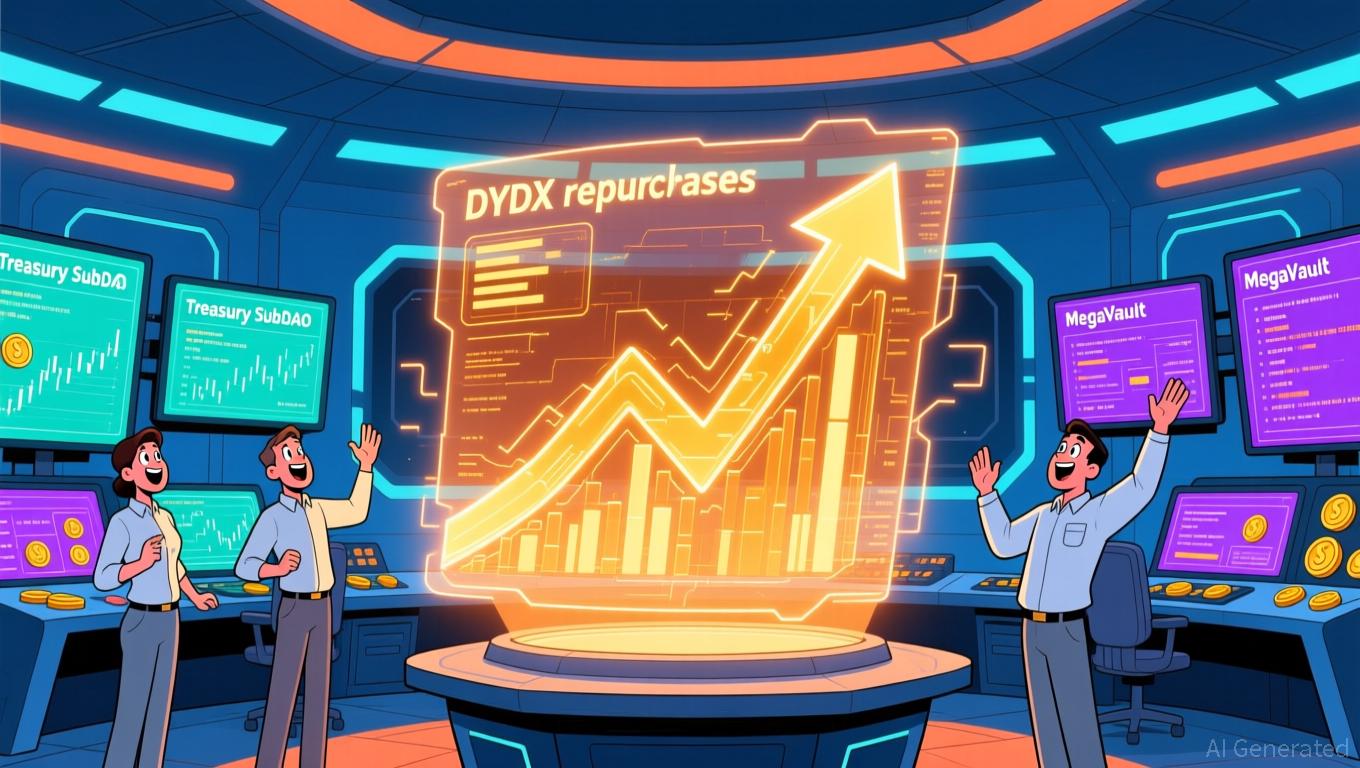Strategic Shift Toward Blockchain Tokens Transforms International Financial Landscape
- Major firms like Circle , JPMorgan , and ConsumerFi are driving blockchain adoption through native tokens to modernize financial systems and boost institutional engagement. - Circle's Arc blockchain introduces a native token to replace USDC gas fees, attracting 100+ institutional partners including Goldman Sachs and Visa during its testnet phase. - JPMorgan expands JPM Coin to euros via Coinbase's Base network, enabling instant cross-chain settlements while partnering with Mastercard and B2C2 to tokenize
The blockchain industry is experiencing rapid growth in the use of native tokens, as leading organizations aim to modernize financial operations and boost institutional involvement. Companies such as
Circle, which issues the

JPMorgan is also making significant progress with its blockchain-powered deposit token, JPM Coin (JPMD), which is now accessible on Coinbase's Base network. This token allows institutional clients to make nearly instant payments around the clock, eliminating the need for traditional multi-day settlement processes, according to an
At the same time, ConsumerFi is combining blockchain and artificial intelligence to revolutionize consumer finance. The protocol introduced its CFI token on the Calyx platform through a multichain sale, allowing users to earn from their digital activities while safeguarding their privacy, as reported by
The
Regulatory developments and market trends are further fueling this adoption. Analysts at Bernstein predict that Circle’s USDC could become the leading stablecoin due to its regulatory transparency and banking alliances, as mentioned in The Coin Rise. Meanwhile, JPMorgan’s Kinexys network already handles over $3 billion in daily transactions, with the potential for rapid expansion as more businesses transition to on-chain settlements, according to CryptoNinjas.
As these projects advance, the boundaries between traditional finance and blockchain are increasingly
Disclaimer: The content of this article solely reflects the author's opinion and does not represent the platform in any capacity. This article is not intended to serve as a reference for making investment decisions.
You may also like
"Digital Privacy Advocate's Rights Reinstated, Underscoring Worldwide Disputes Over Technology Regulation"
- Telegram founder Pavel Durov regains full travel freedom after French judicial restrictions were lifted, following a year of compliance with supervision terms. - French prosecutors continue investigating Telegram for alleged complicity in criminal activity, including child abuse material, with potential 10-year prison charges. - Durov denies allegations, criticizes French procedures as "dystopian," and challenges legal classifications while seeking EU court rulings on digital governance issues. - The cas

dYdX Implements 75% Buyback: Synchronizing Holder Rewards with Platform Growth
- dYdX community approved 75% protocol fee allocation for token buybacks, up from 25%, via a 59.38% voter majority on November 13, 2025. - The revised distribution aims to reduce DYDX supply, enhance scarcity, and align token holder incentives with platform performance through automated, transparent buybacks. - 5% of fees now fund Treasury SubDAO and MegaVault for ecosystem development, balancing supply reduction with staking incentives and research-driven growth. - Analysts highlight this as a DeFi govern

XRP News Today: XRP ETF Debut Marks Transition Toward Utility-Focused Digital Assets as Regulators Approve a New Phase
- Canary Capital's XRPC ETF became the first U.S.-listed spot XRP ETF, trading $26M in 30 minutes on Nasdaq. - The launch followed SEC approval via Form 8-A and reflects growing institutional demand for RippleNet's cross-border payment utility. - XRPC outperformed Solana ETF's $56M first-day volume in pre-launch on-chain activity but faces whale profit-taking and mixed technical indicators. - Regulatory clarity post-July 2025 and XRPC's pure spot structure differentiate it from derivative-based XRPR ETFs,
ZK Nation Empowers Holders to Directly Manage Token Supply
- ZK Nation proposes ZKTokenV3 upgrade with permissionless burn functionality, a key step in programmable supply management. - New features include public token burning, BURNER_ROLE authority, and a 21 billion ZK supply cap enforced during minting. - Upgrade aims to decentralize supply control, enabling holders to directly impact scarcity without centralized governance. - Analysts highlight reduced inflation risks and increased market confidence, with voting active until November 13.